

CPO in Jelvix with 8+ years in software development. He has been working as a project manager for more than 6 years. Kirill has managed a wide range of projects from various business segments and understands the processes that will drive the product to success. He started from managing small teams, and now he assembles an expert team of more than 40 software developers. His expertise and knowledge of the latest technical innovations have brought Jelvix to the ranks of the most distinguished custom software development companies.

A software design document (SDD) is one of the primary documents in the software development process. The file contains a detailed description of the product characteristics, architecture, functional and non-functional requirements. It also specifies the responsibilities of team members regarding accomplishing these goals.

A software design document is written in the text form, but it often features visualization – charts, graphs, and diagrams that depict the functionality of the product and process characteristics.
This post describes the structure of the software design document with requirements and examples of each section. After going through this guide, you’ll know what documentation can be expected from a software development vendor – and what insights should be provided from you.
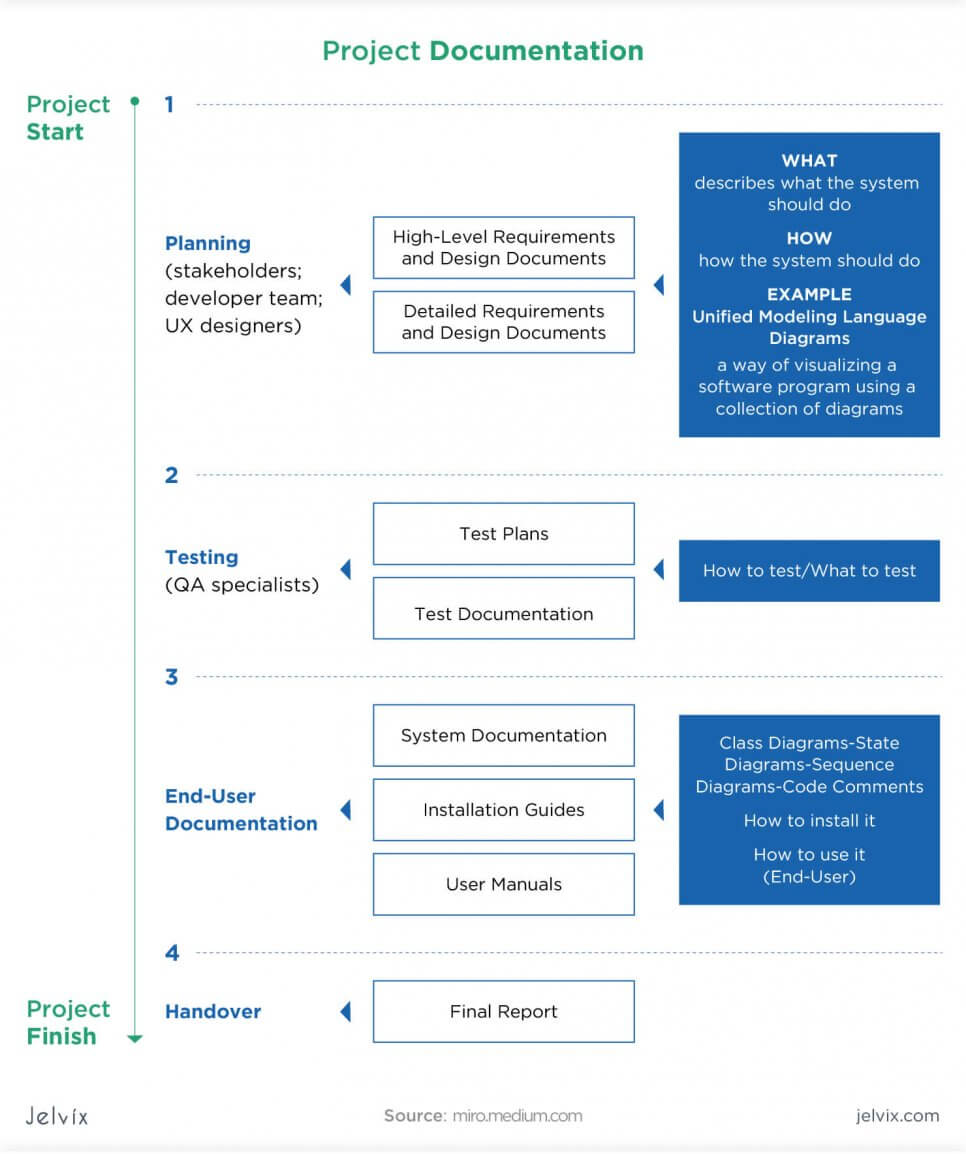
The structure of a software development design document depends on the particular project, but major sections usually remain the same. Each section typically features goals and their detailed description. It’s essential to use precise vocabulary – no sales talk. Everybody in the team should understand your objectives – so the simpler the statements are, the better.
The introduction to the software design document describes the document itself. Here, the team and the stakeholders define the purpose of the document, its target audience, when it will be used, and how it will mediate software development.
Example of the introduction
This document will provide the team and the stakeholders with information about the software’s structure, architecture, and requirements. It will also describe the process and detail the constraints with graphical and narrative documentation. This software design document includes a series of diagrams, graphs, spreadsheets, and guidelines on the process. This file will be referred to during the entire project and can be edited upon all involved parties’ agreement.
In the introduction, the team will briefly describe the structure of the document and its assets.
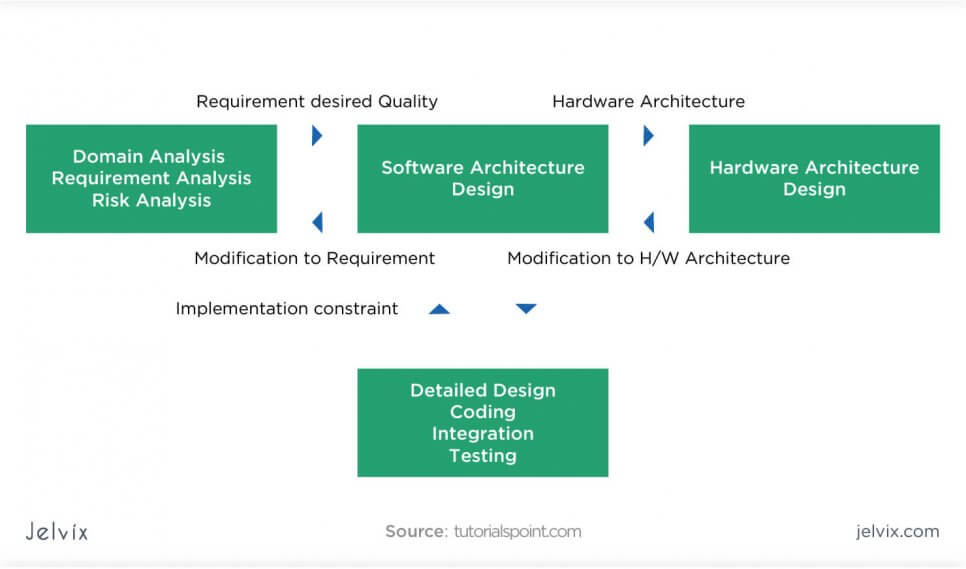
1.1 Purpose
The cases for using software design documents are overall pretty standard, but they depend on the project and the team. This is why it’s best to make sure that the document has this section to avoid writing conflicts and use the file.
Software design document example
This software design document describes the structure of the software and how it will be built and executed. The file provides technical details and a description of all methods and technologies.
1.2 Scope
This section of the software design document dives deeper into the document’s role in the project. The purpose mainly refers to SDD in the software context whereas scope also answers other questions like “What’s in it for stakeholders and end-users?”
Example of the scope
The software design document’s scope sets the requirements for the software, helping the team and the stakeholders summarize the characteristics of the desired product. Here, parties state which features are essential to achieve business objectives and user experience goals. In particular, the document is focused on describing the essential functionality and critical architectural components.
1.3. Audience
When we mention “stakeholders” throughout the guide, we usually talk about the development team and the client. However, the process can include a lot of other people – investors, partners, third-party vendors. You need to identify early on who will participate in the project and decide if these parties’ opinions are relevant for SDD creation.
Usually, only developers and the client are involved in creating the document, other parties simply have access to it if there’s a need. To avoid privacy issues and responsibility shifts, specify the document’s stakeholders in this section.
Example of the section
This document will be created and used by the development team, project manager, and the client. The process of making changes to the software design document should be discussed with all participants. All stakeholders are free to refer to SDD at any stage of the project.
1.4 Definitions, Acronyms, and Abbreviations
The software design document uses a lot of specialized acronyms and terms. It’s important to list these terms with their descriptions. We usually make a list with definitions, acronyms, and terms, give a short explanation, and a link to a detailed article or report.
Example of the section
We recommend discussing references that all participants will be using to explain terms. Providing a description of terms and acronyms prevents misunderstandings and helps during discussions. Lastly, the standard formatting practice is to put the terms in alphabetic order so that they are easy to find and categorize.
1.5 References
It’s a section where the software development team and client list their reference documents and examples. If you are using a guide – like this one – you can list it as a reference. Make sure to provide the name of the material and a public link to it.
In the overview, the team lists the main points that will be discussed throughout the document. Our common practice is to make the title of each section clickable for fast and convenient access.
An executive summary is a document that describes the project – its goals, objectives, and strategy. The project stakeholders should be able to understand what it’s all about just by reading this section.
The summary is prepared at the beginning of the project and is gradually updated as the team moves along. An outline aims to give brief information on all practical aspects of project management, requirements, expectations, and the team’s actions.
Example of an executive summary
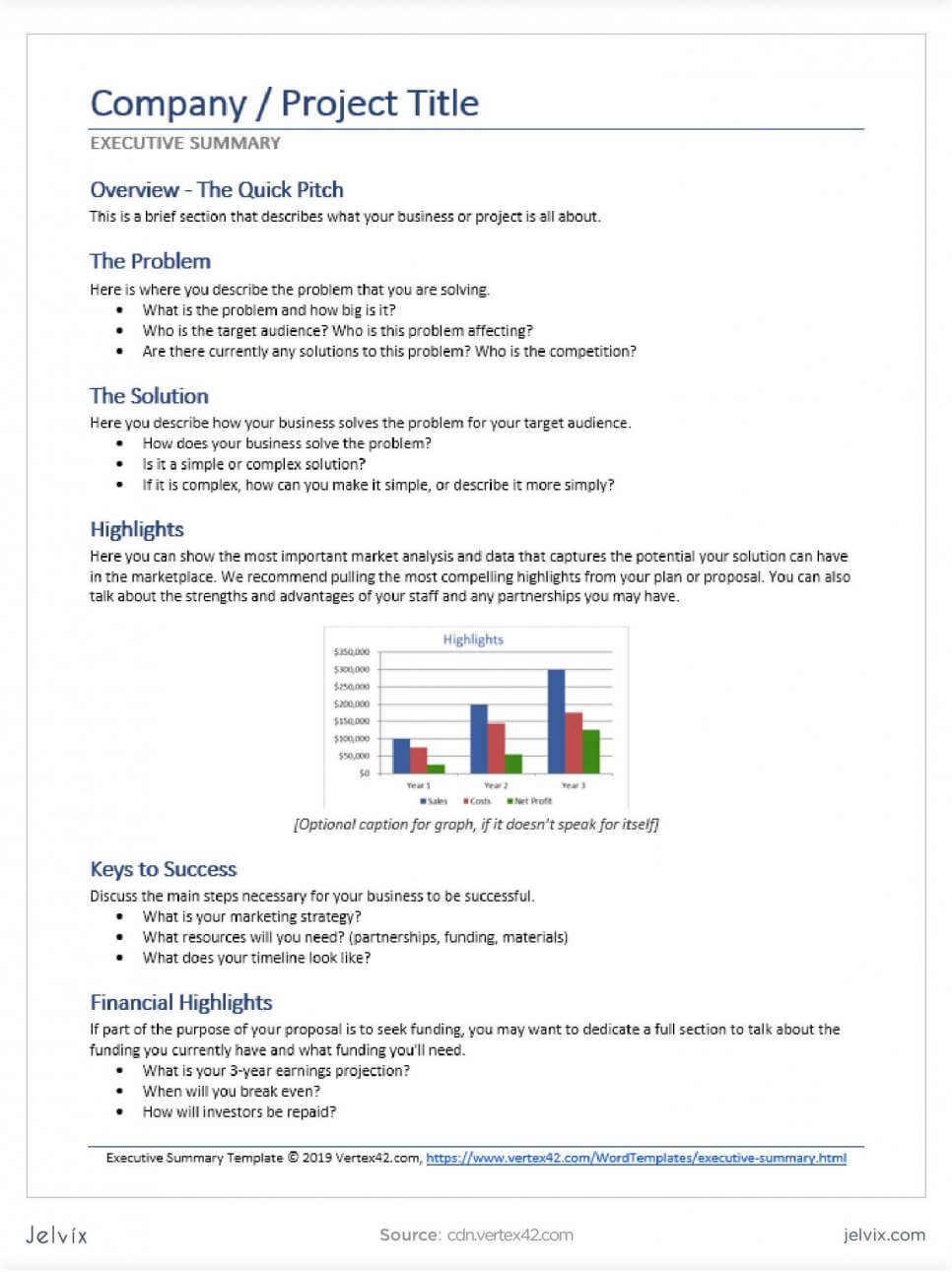
Often, executive summaries focus only on the positive aspects of the project – past successes, expectations, goals, and conversation starters. However, a software development summary isn’t an investment pitch. It should be a concise profile of the project, with challenges, risks, and estimated costs.
A system overview is a section of the document that describes exclusively the product. Up to this point, the document was mostly focused on the process, organization, and internal activities. System overview, however, describes the functionality and interface of the product and main user activities.
The structure of the system overview
Example of the system overview
The structure and contents of the system overview are specific to the product, its design, and its purpose. To illustrate the section, we chose an existing overview from Oracle docs. Their systems are complex enough to demonstrate a detailed description – you can use it as a reference both for startup-level and enterprise-level projects.
To take a look at the full overview, go to Oracle’s complete system documentation – it can be used as a good software design document template . We like this example for its lists, clear explanations, and headlines. The text is readable, easy-to-scan, and understandable, even for non-technical stakeholders.
Each software development project needs a contingency plan that describes risks and their estimated costs. Stakeholders should rely on mathematical models along with previous experience to come up with a relevant model of contingency analysis.

Here’s an example of a model that development teams can use to develop a contingency plan for almost any software development project. A model offered in the International Journal of Project Management considers factors from the realm of product engineering, development constraints, and the environment – you can analyze these aspects one by one to estimate your risks.
Example of a section
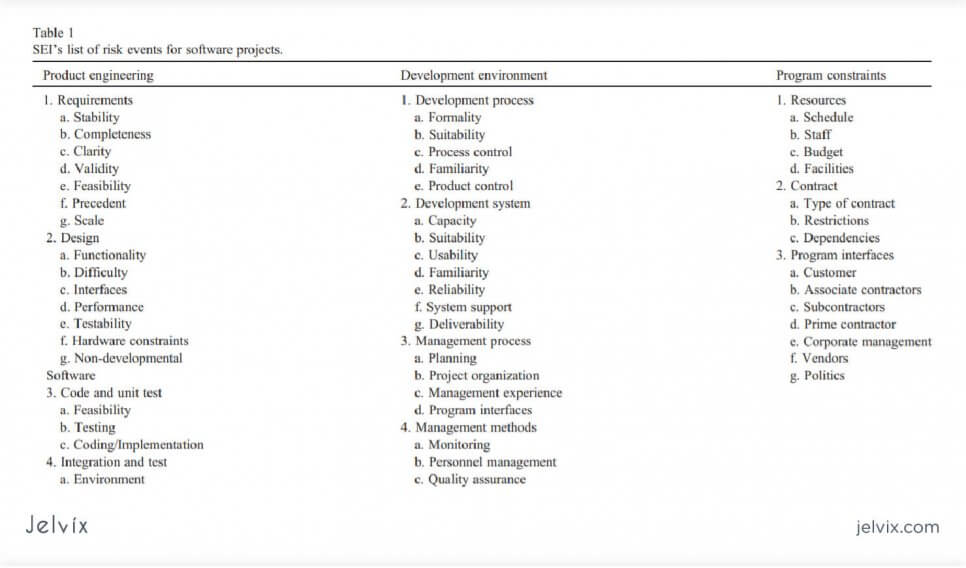
The technical design document should describe which documentation will be created and stored over the course of the project. Each stakeholder should know where to find files and how to access them, as well as be aware of security practices.
An example of a section

The central part of the software design document is dedicated to describing design guidelines. This is the section where stakeholders define design requirements, responsible team members represent dependencies and risks. Let’s quickly review each of the areas before taking a look at practical examples.
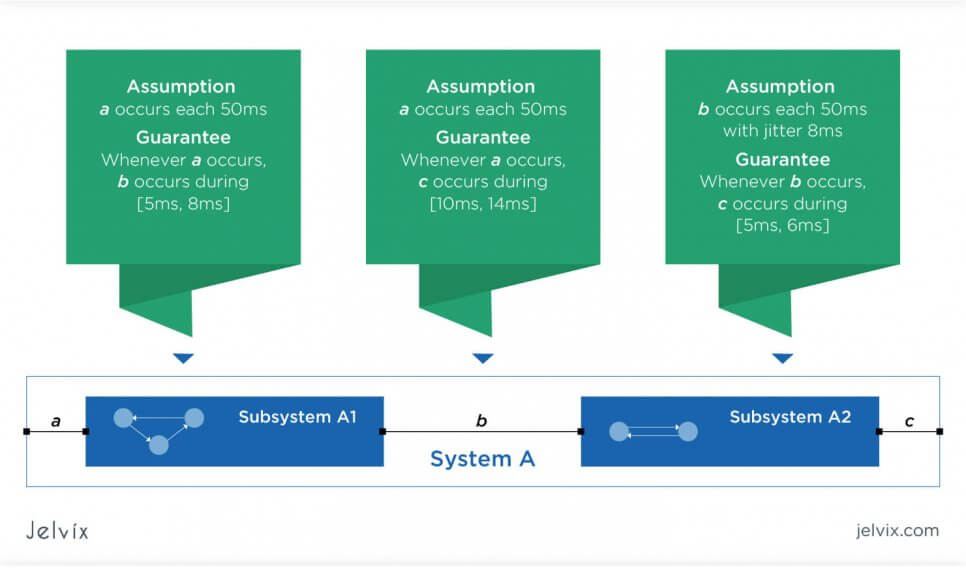
Analyzing the system’s design before starting the development provides you the bigger picture essential for a correct estimate of the project. If the system hides many vulnerabilities and dependencies, it will affect the sprint’s duration and cost.
In the software development process, many aspects surround the process itself and need to be considered early on. You describe these factors as considerations.
Let’s take a more in-depth look at the system architecture description since it’s a vital segment of a software development plan. The team and stakeholders will refer to the information in documentation to understand the logic behind the application. With an SDD, you can zoom out from smaller tasks and look at the bigger picture anytime.
To describe the system architecture, you need to visualize the bigger picture first. After stakeholders agree on the overall structure, you can discuss technical details – hardware and software characteristics, design constraints, and non-functional requirements. Additionally, you need to cover information management and security – databases and record management systems have their structure.
System architecture diagram
System developers need to understand the structure of the entire product before proceeding to smaller tasks. A diagram demonstrates software layers and building blocks, in a way that’s clear even to the stakeholders with no development background.
Software architecture diagrams use simple figures and visualization to communicate complex structures. It’s a simplified depiction – you need to define the leading segments and avoid going too deep into the system. That’s the main difficulty of creating such diagrams – the ability to define main elements, leaving less significant ones aside.
Software design document examples with a diagram
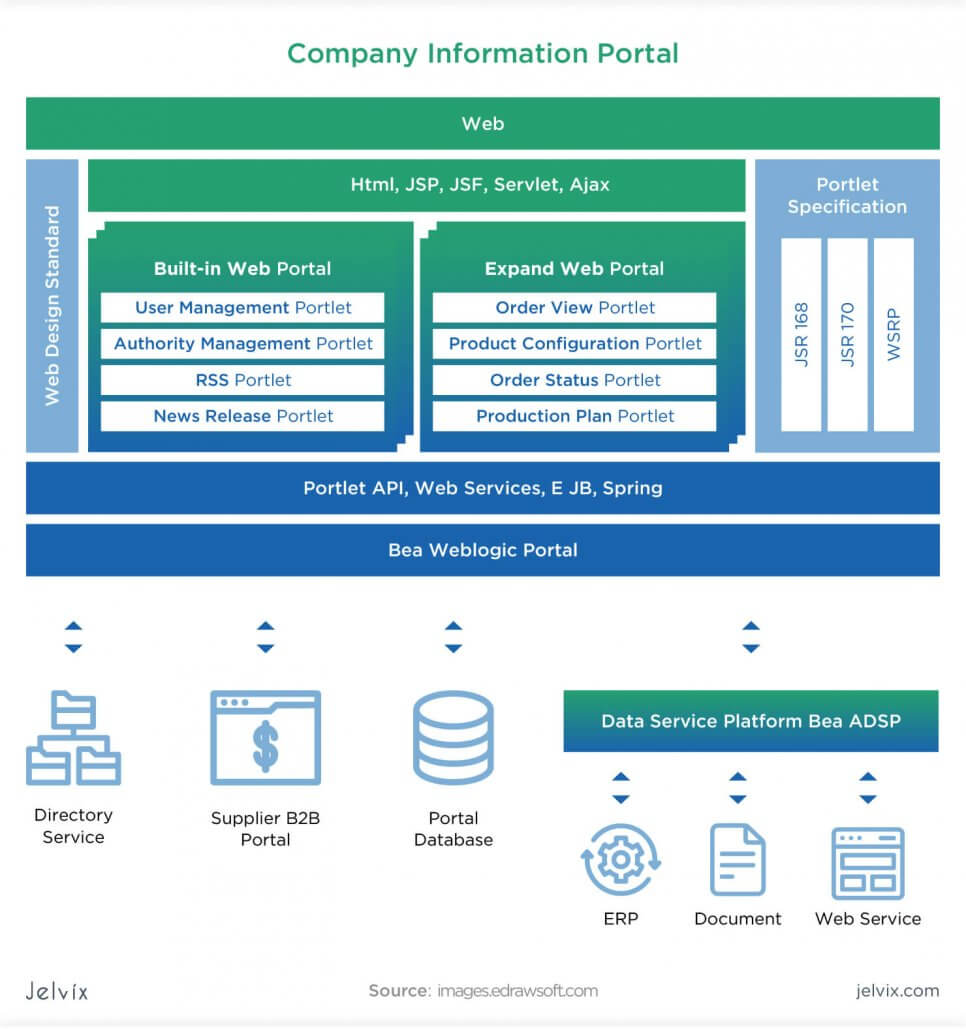
A diagram communicates the main layers of the application, shows dependencies, and provides technical specifications for main tools. You can use simple 2D graphics, like here, or choose 3D, which is harder to make, but easier to read.
Hardware architecture
Software systems heavily rely on hardware specifications. Even a simple mobile app’s functionality can be obstructed by a lack of a suitable camera or recorder. Hardware can create limitations for user experience, and in this case, developers need to adapt and compensate.
This is why you need to analyze the hardware requirements beforehand. Developers should know what kind of devices can support the product. If there are difficulties, you need to find a way to reduce the workload, making the software easy to handle even for older devices.
The hardware architecture description usually includes the list of hardware and its requirements and a strategy for working with it. You don’t need to delve deep into technical characteristics; using simple visualization is enough.
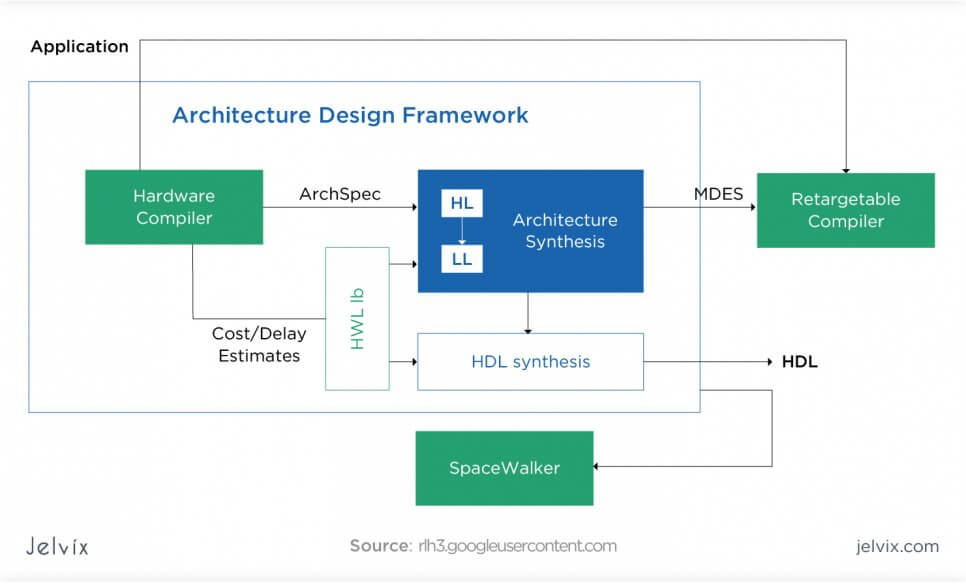
Software architecture description
A software architecture diagram is an excellent way to start, but you also need to be specific about details. Having detailed documentation of all layers, components, third-party dependencies, and intermediaries will be useful throughout all project stages.
When you describe software architecture, you need to know some tips and conventions – here are the main ones.
Information architecture
Describing the order of data flows across the system is very important for a smooth development process. Understanding what inputs and outputs software uses and how it handles information is vital for secure and fast functionality.
In your description of information architecture, you need to refer to several aspects of data processing and storage.
Software systems today use a lot of data every instant. If you don’t plan out information architecture, you’ll have trouble scaling. Security will quickly become a problem as well – not to mention the user experience. So, specifying information architecture right away is a crucial step.
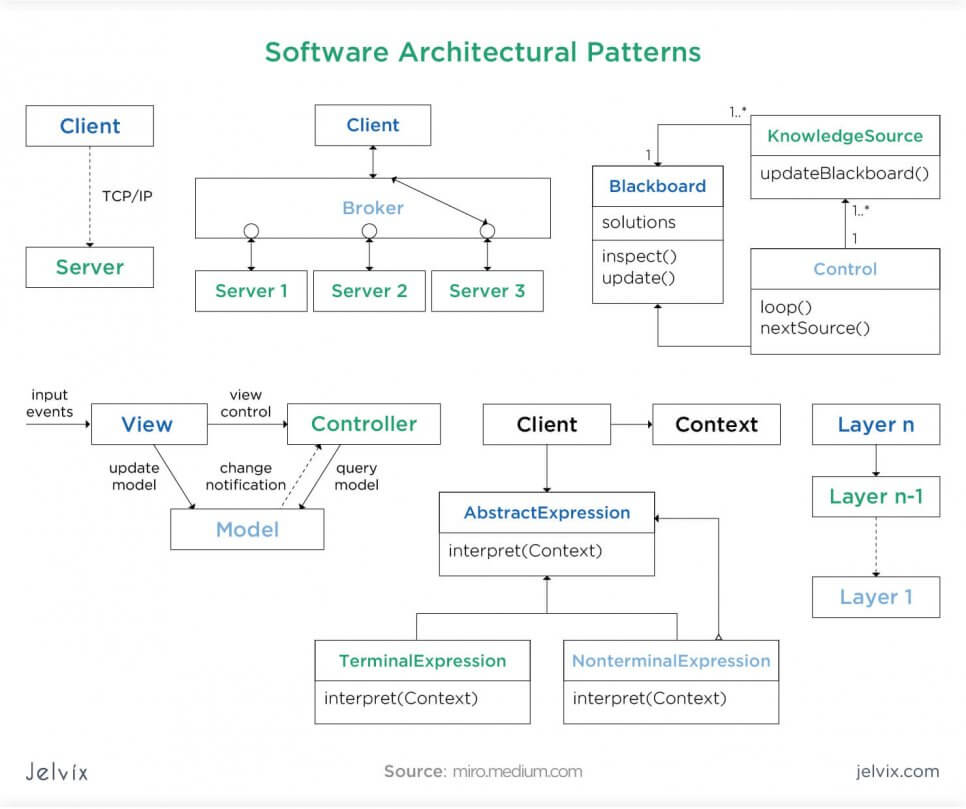
Records management
Managing user information and records should be planned together with information management. You should list which systems, tools, and algorithms the system should use to process and store documents. Also, you need to define the criteria for the records themselves.
Answering these and other questions will help you figure out how many records you need and why. You should then delve into technical details of record management – this is where you execute previously described concepts.
Learn more about the main stages of product development lifecycle to build a sustainable product.
The next step is to investigate deeper into design requirements and expectations. This section covers many design aspects, and the exact number and order depend entirely on the system. Here, we’ll discuss the essential ones, so you know how to structure the section.
Business Requirements
Software design requirements and methods are not random. They should derive from clear business goals. If there’s a feature, it should have real significance for end-users and a development team.
To make sure this functionality is relevant, start by creating business requirements. They must be focused on the following information:
Just like the entire document, business requirements should be written in an exact, concise way: no business-speak or cloudy expressions. You can take a look at this software design doc template for a good reference.
Database Design

The team should describe how the data will be stored in the system and what connections it will have. After system designers and developers know what information they are dealing with, they can create a fitting database model .
A database model determines the structure of the storage and dependencies between the data. The leading choice to make in database design is to decide between relational and non-relational models. We have several in-depth guides to these types of databases and their systems.
As for the design documentation, you need to specify the system itself, the database software that will be used, and the design process. For instance, in a relational database, the designer starts by dividing data into tables, defining primary keys, and establishing relationships.
User Interface Design
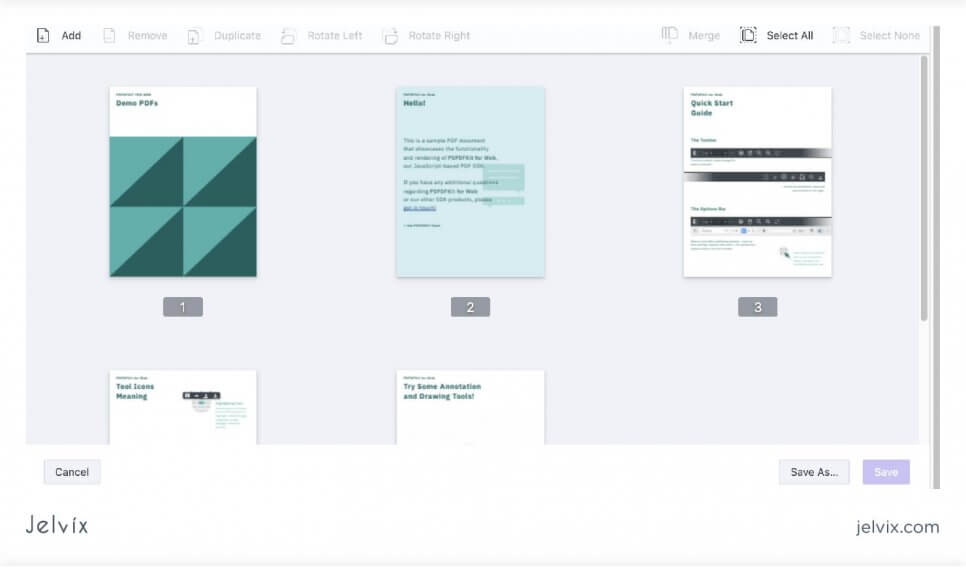
You need to define the user interface and experience for the system. The process starts with UX design – designers analyze user flows, objectives, and create sitemaps and user stories that depict the process.
For user interface documentation, you need to analyze each feature and determine how users can achieve their goals. Create user flows for each function and summarize the results of your analysis in wireframes and sitemaps.
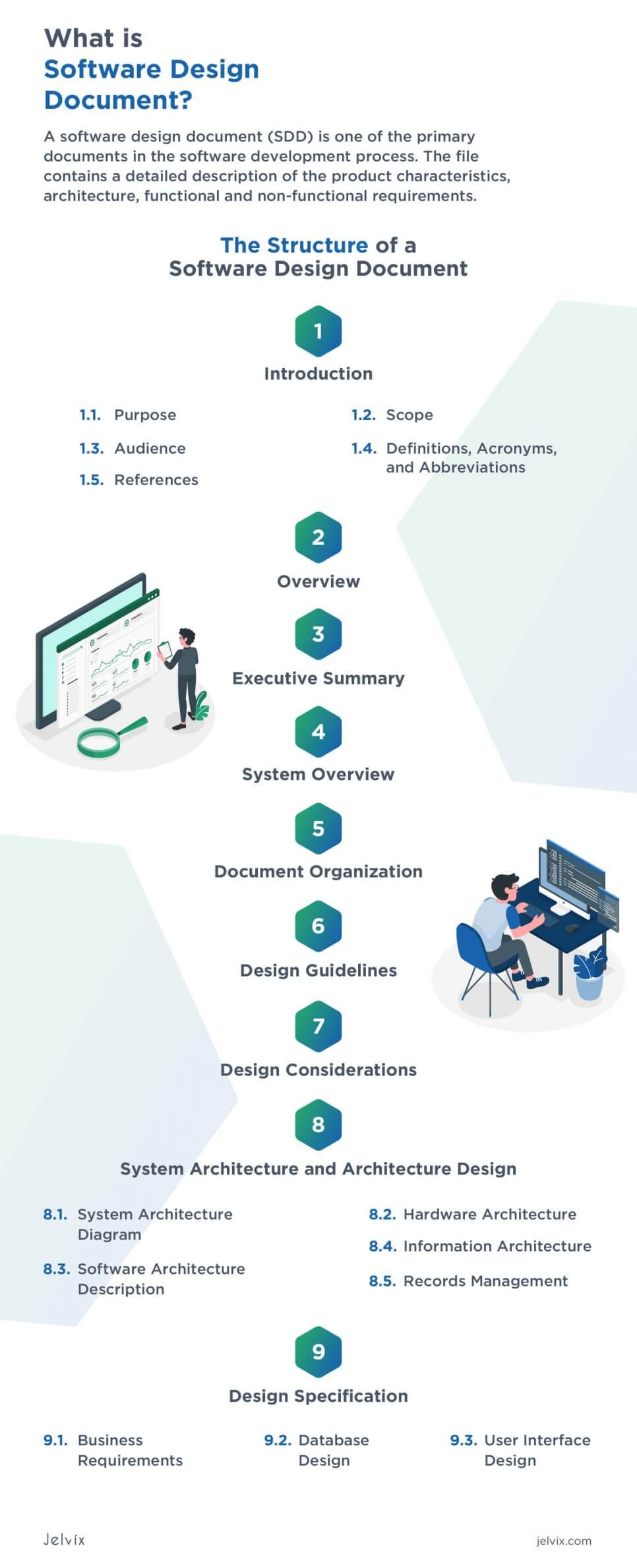
The SDD coordinates the processes and lets stakeholders understand mutual goals and expectations. The team knows exactly what results they are expected to demonstrate. Clients, on the other hand, are perfectly aware of potential gains and expenses.
A well-written software design document lays the foundation for mutual understanding of the product’s goals, a productive search of creative solutions, and smooth executions. It summarizes the team’s vision of the system and gives them references for all development tasks.
In Jelvix, we create all software design documentation for all development projects. Clients know what to expect from the system, how to avoid risks, and solve challenges. If you want to build a project with a team that documents the very best practices and offers personalized solutions, contact our developers . Let’s talk about your product.
Access the talent pool to scale your team capacity.